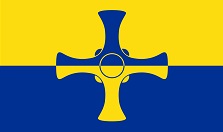

 Durham County Council was formed in 1889, and in 1894 a network of boroughs, urban district and rural district councils was formed across the county.
Durham County Council was formed in 1889, and in 1894 a network of boroughs, urban district and rural district councils was formed across the county.
For a list of Durham maps go to the Durham page. For a full list of English maps, return to the England page
You can order maps direct from our On-line Mapshop.